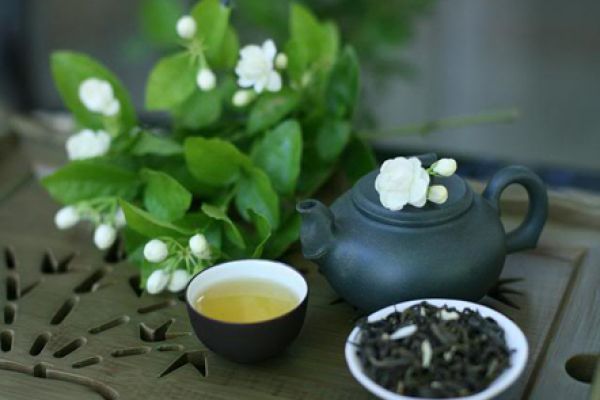
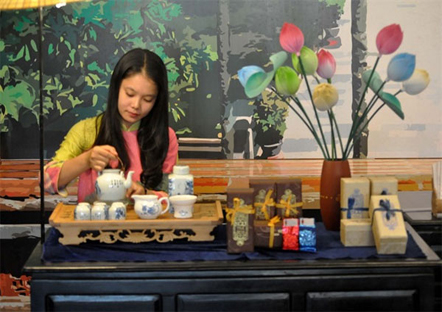
Revival: Serving royal tea at Luc Bo in Hue.
The recipes are now enjoying a revival and renewed interest.
Tea served to kings was not just tea. For royal family members it was a treat, with various herbal ingredients added.
Thuong vien ngu tra, for example, was a royal tea prepared by the monarchic agency specialising in teas – Thuong Tra Vien. It is made from 11 ingredients: jasmine flower, longan, goji berry, dry tangerine peel, liquorice root, jujube, pagoda tree leaves, daisy flower, lotus plumule, dry senna seed and of course the key ingredient – tea.
All are also used as ingredients for herbal medicine. While jasmine and lotus plumule are used to lower body temperature, goji berry and jujube are said to alleviate stress and pain. It is used to treat ulcers, among other things. Liquorice root is said to boost the immune system.
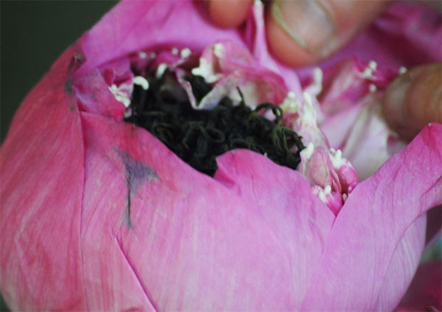
Fragrance: Tea placed inside a lotus flower to make royal lotus tea.
Longan is an herbal remedy for stomach ache and insomnia. The pagoda tree leaves serve to counter bacteria and lower cholesterol levels. Tangerine peels are also beneficial for lowering cholesterol as well as fighting cancer.
According to herbal physician Phan Tan To, the mixture of those 11 ingredients creates a harmonious whole because the herbs do not counter each others’ effects.
“This kind of tea has number of benefits, including internal heat reduction, liver coolant, lowering blood pressure and curing insomnia,” he said.
“Dishes served to kings were always nutritious, while tea and wine included herbal ingredients and were served like medicine. All are safe for one’s health.
“Tea recipes were prepared by Thuong Tra Vien then they were submitted to Thai Y Vien, which gathered the country’s leading herbal physicians brought together as a medical team in the royal palace for careful checks of the benefits and side effects of every substances in the mixed tea."
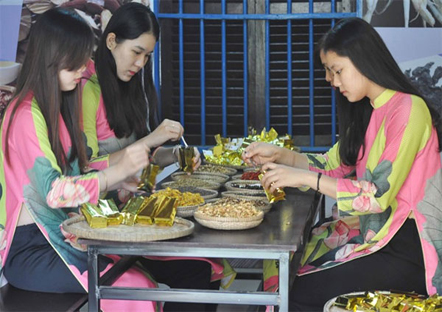
Organically grown: Packaging of lotus tea
To said the recipes were documented, signed and sealed by at least two royal herbal physicians. The physician To found these recipes in the dynasty’s royal records and in 2013 he worked with the Hue Monuments Conservation Centre, the governmental organisation that manages almost all the Nguyen Dynasty’s legacy available in Hue, to revive some of the tea recipes.
Ingredients for the emperors’ tea recipes are available today, making the tea products as good as they were in the service of kings, said To.
Preparation of Tinh Tam lien hoa ngu tra (royal lotus tea) took a week of steeping in natural fragrance of lotus flowers before it was served to kings.
Tinh Tam was a pond created inside the citadel’s territory for the royal family’s recreation. The lotus that grew in the pond was considered to have the nicest fragrance of all lotus species.
Tea leaves were placed in the middle of each lotus flower in the early morning and the petals held the tea through its aromatizing process. After the tea absorbed the lotus fragrance, it was dried in a mixture of lotus stamens to make royal lotus tea.
Today’s version cannot be as pure since lotus varieties have been changed and the environment is different.
But To said today’s version has the same benefits, which are to reduce cholesterol levels, prevent cancer and bost the immune system of frequent drinkers. He added that tea used in the process is grown in organic farms in northern Thai Nguyen Province and harvested selectively.
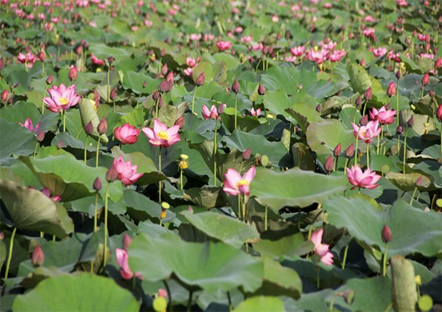
Medicinal value: Lotus flowers play a key role in the production process of Hue royal teas. |
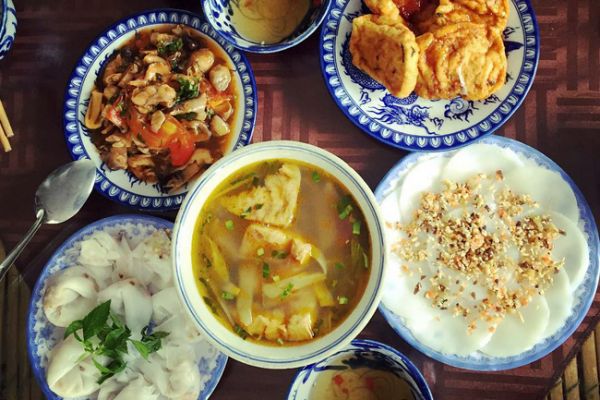
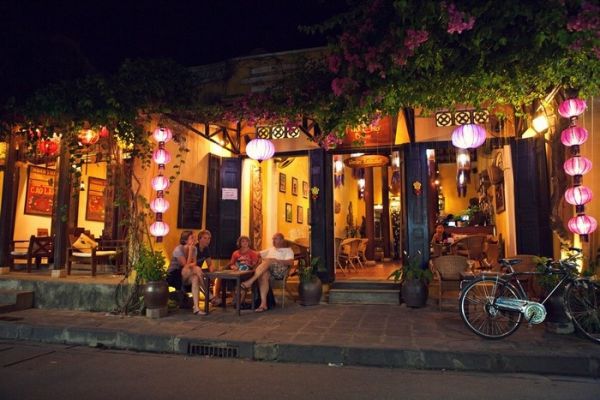
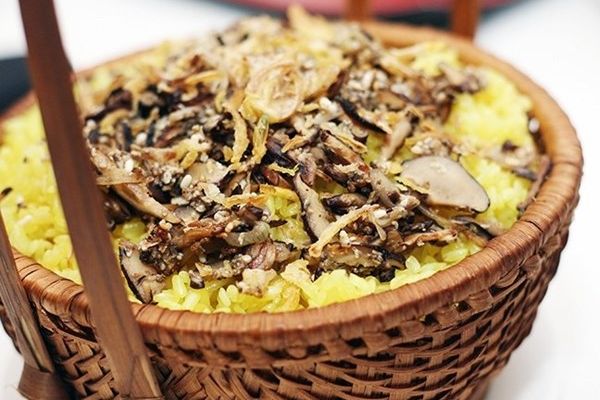
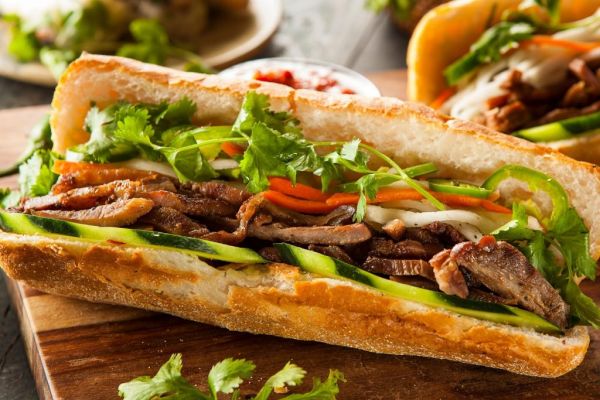
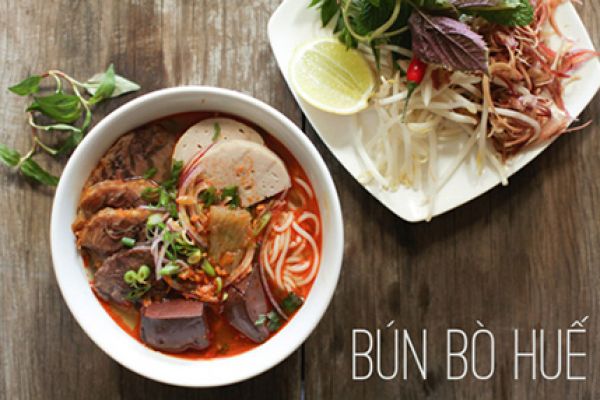

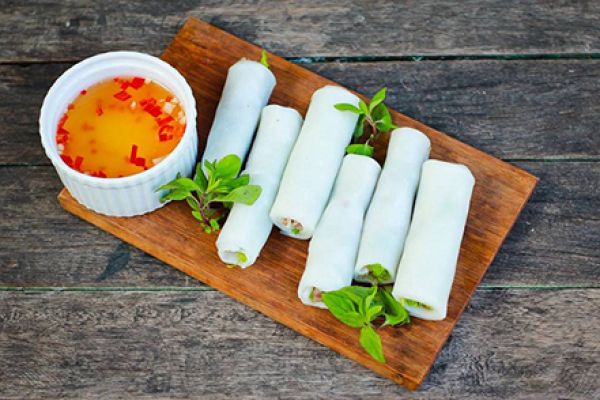
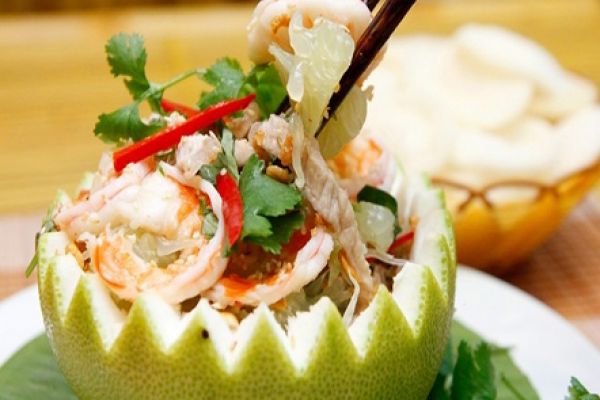
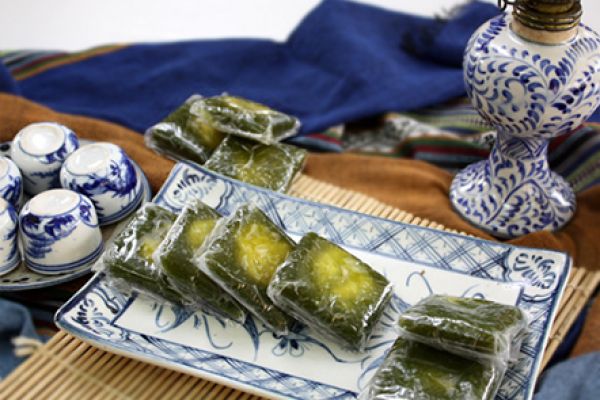
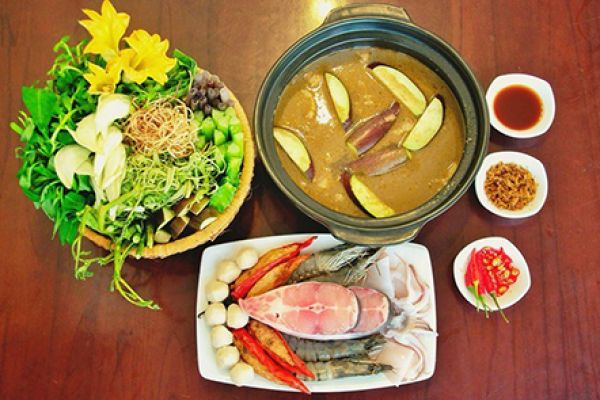
(84-63) 3 826042 – (84-63) 3 511142
No 54 Nguyen Dinh Chieu, Ham Tien Central Mui Ne Beach Binh Thuan Vietnam
523 To Hien Thanh District 10 Ho Chi Minh City Vietnam
Ha Long Halong City Quang Ninh Vietnam
A13 Hung Thong 2 Halong City Quang Ninh Vietnam




